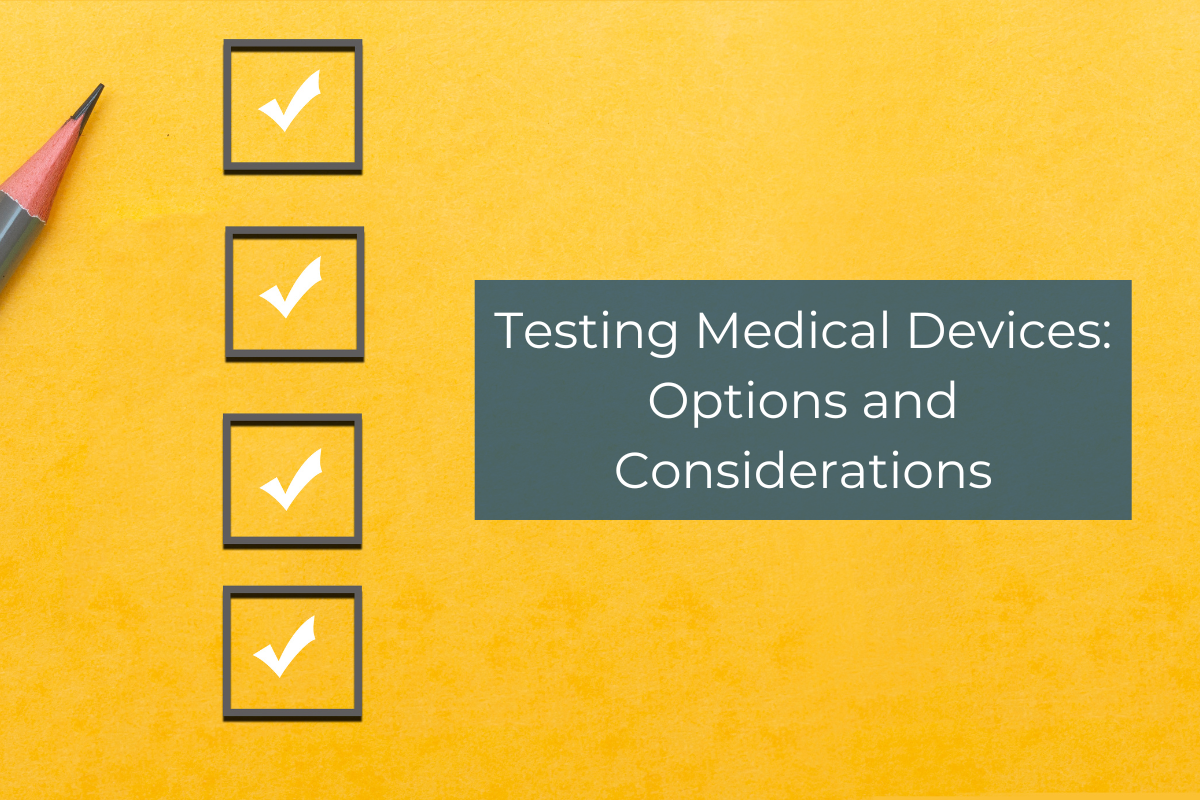What do manufacturers need to know about testing medical devices before bringing them to market?
When you’re preparing to bring your medical device to market, it’s your responsibility as a manufacturer to get it tested and ensure it meets the standards before it can be marketed and sold. But how does this process work, and what should you consider regarding standards and testing?
What is the difference between standards and testing for your medical devices?
Your medical device needs to meet certain standards to get on the market. These standards will depend on what type of device you are getting tested and how it is used. When you feel confident that you have abided by the standards, testing is where you prove this is the case.
How do you know what standards apply to your medical device?
When figuring out which standards apply to your medical device, you must be mindful of horizontal and vertical standards.
Horizontal standards
Horizontal standards have broad applications for all medical devices. These include fundamental guidelines for devices, such as managing risk (ISO 149710), engineering principles regarding usability (IEC 62366-1), and quality management (ISO 13485) of a device. Within these horizontal standards, it’s important to keep in mind that not all requirements are recognized in each country. For example, ISO 13485 is not recognized by the FDA. Still, reviewing horizontal standards is an excellent place to start.
Semi-horizontal standards
Semi-horizontal standards are for features of medical devices but can apply across several product groups, so they aren’t as narrow as vertical standards. One of the most noteworthy semi-horizontal standards is IEC 60601-1, which applies to all medical electrical equipment and the safety and performance requirements for this equipment. If your medical device has software, you must also abide by IEC 62304, which pertains to software life cycle processes.
Within IEC 60601-1, there are many collateral standards for performance and safety, as well as particular standards that apply to specific products, such as cardiac defibrillators (60601-2-4), nerve and muscle stimulators (60601-2-10), and critical care ventilators (60601-2-12).
Another set of semi-horizontal standards you might need to consider concern biocompatibility (ISO 10993), regulations that apply to how medical devices work when directly or indirectly in contact with the body.
Vertical standards
Vertical standards are more specific and apply to certain product groups. The FDA Recognized Consensus Standards Database can be searched by keyword, designation number, product code, and more, and it can be a good place to reference acknowledged standards that may apply to your device type. The Product Code Classification Database is another place to look at all listed medical devices, their device classes, and regulation numbers. If you are working to establish standards by comparing your device with one you see as equivalent, you can also use the 510(k) Premarket Notification Database.
The process to find standards is going to be more challenging if the medical device is either new or uses newer technology, but doing searches to find approximations to what you are developing can help you lay out a plan for standards to apply and identify where gaps may exist.
Where can you get tested to ensure you abide by standards?
For companies looking to get approved in the U.S., the FDA has a list of Accreditation Scheme for Conformity Assessment (ASCA)-certified facilities. These facilities can conduct premarket testing before submitting to the FDA. On the list, you can see the current scope of ASCA accreditation by facility – which standards can be tested at each location. Some of the facilities you might use for basic safety, and essential performance testing include, but are not limited to, the following:
- UL: UL is one facility that provides IEC 60601-1 testing and certification.
- TÜV Rheinland: This facility provides testing for IEC standard 60601-1.
- Intertek: the range of standards Intertek tests for varies by location. For example, in Arlington Heights, the facility can test for IEC 61010-1, whereas the Boxborough facility is accredited for many standards under IEC 60601 and ISO 80601.
- Eurofins: Eurofins tests for IEC 60601 and 61010 standards
- SGS: SGS provides testing for IEC 60601, 80601, and 61010.
What should manufacturers keep in mind when going through the testing and certification process?
Once you’ve determined what standards your product needs to adhere to and where you’d like to get testing done, also keep in mind how long it might take to get the product through this process and to market. There are differences in timelines, fees, and necessary steps with FDA versus EU product certification, for example.
PC-based medical electrical devices will need PSUs that are compliant with IEC 60601-1, and those that will be submitted after December 17, 2023, will need to be compliant with the latest version of the standard – IEC 60601-1 3.2. RAM Technologies’ PSUs are fully compliant with these new requirements and are now certified.
To order PSUs or ask questions, contact us today.
________________________
RAM Technologies’ power supplies are 60601-1 3.2 certified and meet 60601-1-2 EMC standards. When you’re designing your medical device and need help with a PSU, contact us for details.
